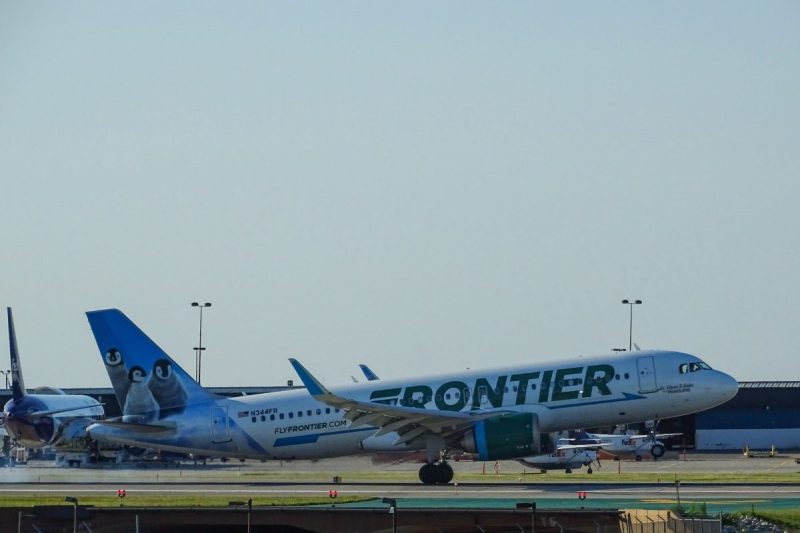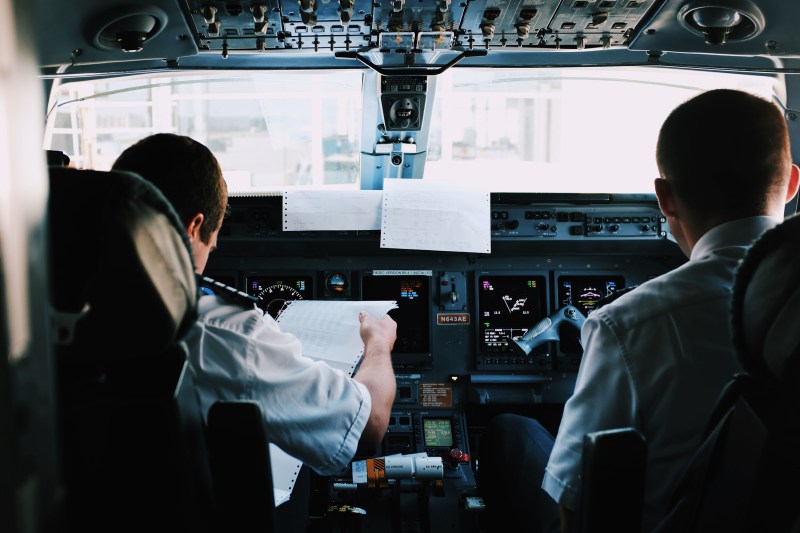Dubbed the summer of travel hell for air travel, increased demand for travel and a serious labor shortage caused thousands of canceled and delayed flights during the past few months. Now, airlines are doing whatever it takes to avoid these issues going forward. And in Frontier’s case, that means creating a new training program for aspiring pilots—no flight experience required. Read more about this flight training program and see if you have what it takes to become a pilot.

The Flight Cadet Program and Frontier’s goals
To combat the nationwide pilot shortage, Frontier Airlines came up with a creative solution to attract new talent: the Flight Cadet Program. The thing that makes this program so unique, however, is that it doesn’t require trainees to have any previous flying experience.
With this new $8 million pilot recruitment strategy, the company hopes to avoid staffing difficulties for years to come. Brad Lambert, Vice President of Flight Operations for Frontier Airlines, told NBC News, “We really want to provide an opportunity for aspiring pilots. We also want to be able to control our destiny going forward.”
Looking forward, the company sees this program as an important step in its future growth. The airline currently has more than 100 aircraft in operation, and with 230 on order, they’re set to triple in size. “We will still hire off the street, and we’ll still have other programs in place, but this program at the very least assures that we have the minimum number of crews we need going forward,” said Lambert.
Accessible—yet extensive—training
Frontier’s flight program is open to anyone who wants to learn how to fly. Just because you don’t need any flight experience to apply for the program doesn’t mean the application process will be any less intensive. Each month, 35 cadets will be chosen to go through comprehensive training at an ATP Flight School.
Once selected, the cadets will complete an extensive two-year training program, spend 15 hours up in the sky, and earn their Airline Transport Pilot License. Their progress will be monitored the same way as Frontier pilots before them — meaning they’ll need to pass all required tests and get all necessary certifications.
After receiving their Airline Transport License, cadets will go to Frontier Airlines’ main training facility for additional training. They’ll spend another 40 hours in a flight simulator for commercial airplanes. Then, cadets will progress from First Officers and eventually to Flight Captains.

Ready to become a pilot?
If you’re interested in joining the program, you’ll be up against some serious competition. Since applications opened earlier this year, more than 500 people have applied. And if you get in, your bank account may take a serious hit. The flight school costs $90,000 in total, though Frontier plans to offer stipends and financial support before cadets begin working full-time with the company. And though the price looks expensive at first, the average salary of a first-year first officer is around $100,000—so it may well be worth it in the long run.
Have you ever dreamed of becoming a pilot? With Frontier’s Cadet Program, you may finally have your chance. The program makes learning to fly accessible to anyone, even with its intensive application process and hefty tuition price. And this program isn’t just great for aspiring pilots; more pilots mean better air travel too. It’s a win-win for everyone.



